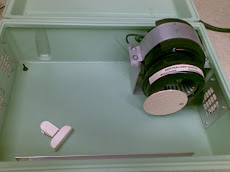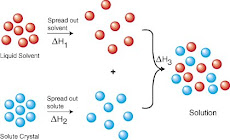Sipchem and Hanwha Join Forces in New Petrochemical ProjectSaudi International Petrochemical Company (Sipchem) and South Korea’s Hanwha Chemical recently reported their joint investment of $90m (€64.8m) in a new petrochemical project. Under the agreement, Hanwha will receive a 40% share of the [ethylene vinyl acetate] (EVA) product sales, with the 60% remaining marked for Sipchem. Located in Al-Jubail, Saudi Arabia, the project includes a 200,000 tonne/year EVA plant and a 125,000 tonne/year plant for polyvinyl products. Ownership of the plants will be divided with 75% belonging to Sipchem and 25% going to Hanwha. The products produced will be used in a variety of applications including hot melt adhesives, hot glue sticks and many others. Additional U.S. Plants to Close at Dow ChemicalThe board of industry giant Dow Chemical has approved a restructuring plan to close more U.S. plants. Those ethylene -derivative plants affected are located in the Louisiana towns of Hahnville and Plaquemine. These recent closures are in addition to numerous other similar shutdowns recently implemented as part of the Company’s restructuring program that was announced in the fourth quarter of 2008. The restructuring program was in line with the Dow’s goal of achieving $1.3 billion synergies on the acquisition of Rohm and Haas. Included in the plan was a charge for the elimination of 2,500 positionsCelanese to Close French Subsidiar Celanese Corporation has reached a final agreement with workers on how the chemical maker will shut down its Acetex Chimie subsidiary, located in Pardies, France. As a result of the closing, all 350 plant employees will lose their jobs. All operations at the site are expected to cease by December. The facility produces two chemicals, including acetic acid. The 350 employees losing their positions are at management, maintenance, operations and support levels. Celanese evaluated the facility earlier in the year, focusing on factors such as competitiveness in their respective markets, customer demand, raw material costs, and labor costs. As a result of the findings, the Company determined that the site should be closed. Production of the same products will continue at existing facilities in Texas, China and Singapore. DuPont Titanium Technologies Raises Prices for Its Ti-Pure® Titanium Dioxide Products Abroad DuPont Titanium Technologies (DTT) recently announced it will increase the price in the U.S. dollar markets of Africa, Eastern Europe, and Middle East regions for all its Ti-Pure® titanium dioxide (TiO2) grades. Prices in those regions will increase by $150 per tonne (USD). This increase is effective Aug. 1, 2009 or as permitted by contract and is in addition to an earlier increase in the same markets which was announced on May 15, 2009
miércoles, 29 de julio de 2009
Suscribirse a:
Entradas (Atom)
Vistas de página en total
GREEN CHEMICALS
The Green Seal certification is granted by the organization with that name and has a great number of members contributing with the requirements to pass a raw material or a chemical product as "green". Generally for a material to be green, has to comply with a series of characteristics like: near neutral pH, low volatility, non combustible, non toxic to aquatic life, be biodegradable as measured by oxygen demand in accordance with the OECD definition.
Also the materials have to meet with toxicity and health requirements regarding inhalation, dermal and eye contact. There is also a specific list of materials that are prohibited or restricted from formulations, like ozone-depleting compounds and alkylphenol ethoxylates amongst others. Please go to http://www.greenseal.com/ for complete information on their requirements.
For information on current issues regarding green chemicals, see the blog from the Journalist Doris De Guzman, in the ICIS at: http://www.icis.com/blogs/green-chemicals/.
Certification is an important — and confusing — aspect of green cleaning. Third-party certification is available for products that meet standards set by Green Seal, EcoLogo, Energy Star, the Carpet & Rug Institute and others.
Manufacturers can also hire independent labs to determine whether a product is environmentally preferable and then place the manufacturer’s own eco-logo on the product; this is called self-certification. Finally, some manufacturers label a product with words like “sustainable,” “green,” or “earth friendly” without any third-party verification.
“The fact that there is not a single authoritative standard to go by adds to the confusion,” says Steven L. Mack M.Ed., director of buildings and grounds service for Ohio University, Athens, Ohio.
In www.happi.com of June 2008 edition, there is a report of Natural formulating markets that also emphasises the fact that registration of "green formulas" is very confused at present, due to lack of direction and unification of criteria and that some governmental instittion (in my opinion the EPA) should take part in this very important issue.
Also the materials have to meet with toxicity and health requirements regarding inhalation, dermal and eye contact. There is also a specific list of materials that are prohibited or restricted from formulations, like ozone-depleting compounds and alkylphenol ethoxylates amongst others. Please go to http://www.greenseal.com/ for complete information on their requirements.
For information on current issues regarding green chemicals, see the blog from the Journalist Doris De Guzman, in the ICIS at: http://www.icis.com/blogs/green-chemicals/.
Certification is an important — and confusing — aspect of green cleaning. Third-party certification is available for products that meet standards set by Green Seal, EcoLogo, Energy Star, the Carpet & Rug Institute and others.
Manufacturers can also hire independent labs to determine whether a product is environmentally preferable and then place the manufacturer’s own eco-logo on the product; this is called self-certification. Finally, some manufacturers label a product with words like “sustainable,” “green,” or “earth friendly” without any third-party verification.
“The fact that there is not a single authoritative standard to go by adds to the confusion,” says Steven L. Mack M.Ed., director of buildings and grounds service for Ohio University, Athens, Ohio.
In www.happi.com of June 2008 edition, there is a report of Natural formulating markets that also emphasises the fact that registration of "green formulas" is very confused at present, due to lack of direction and unification of criteria and that some governmental instittion (in my opinion the EPA) should take part in this very important issue.










































